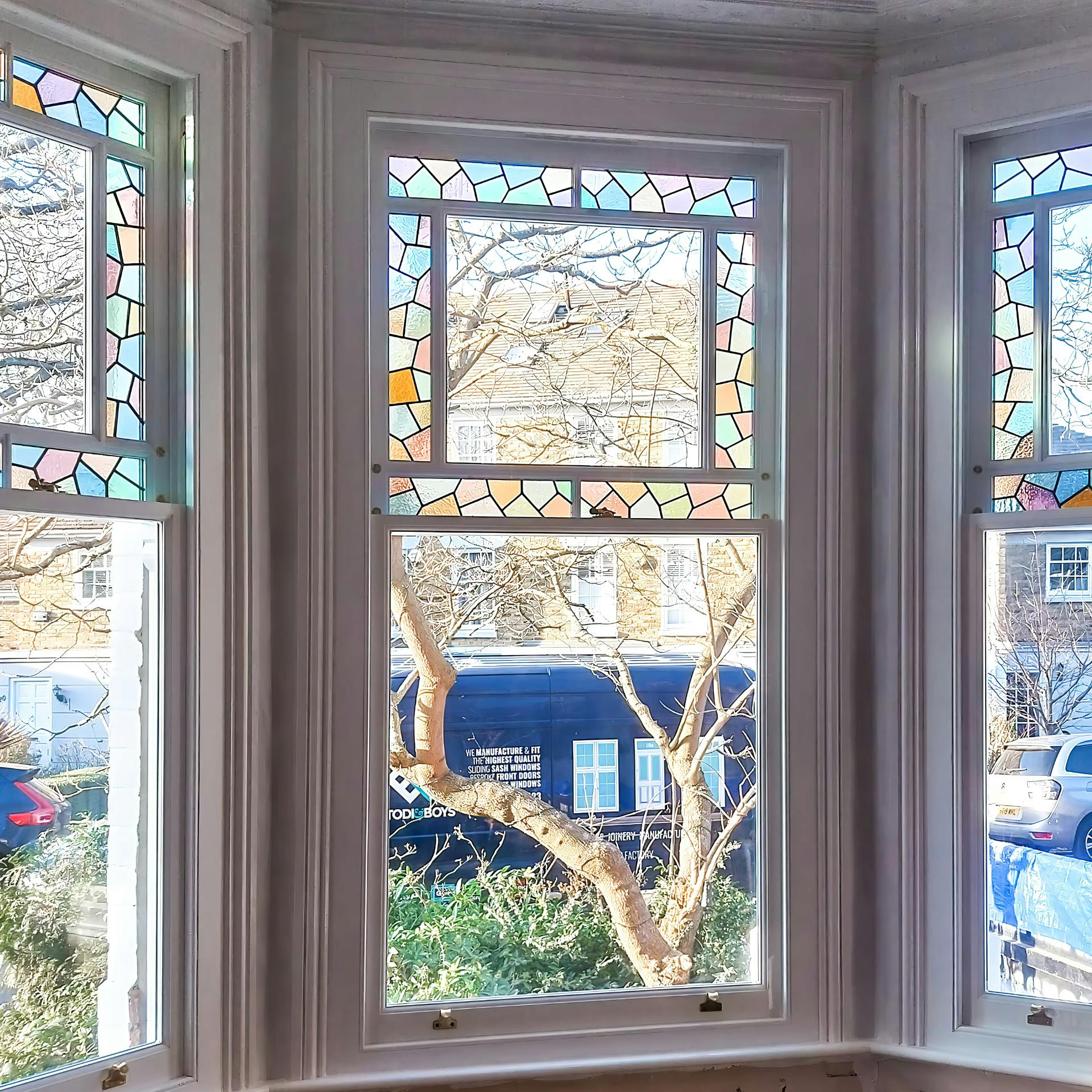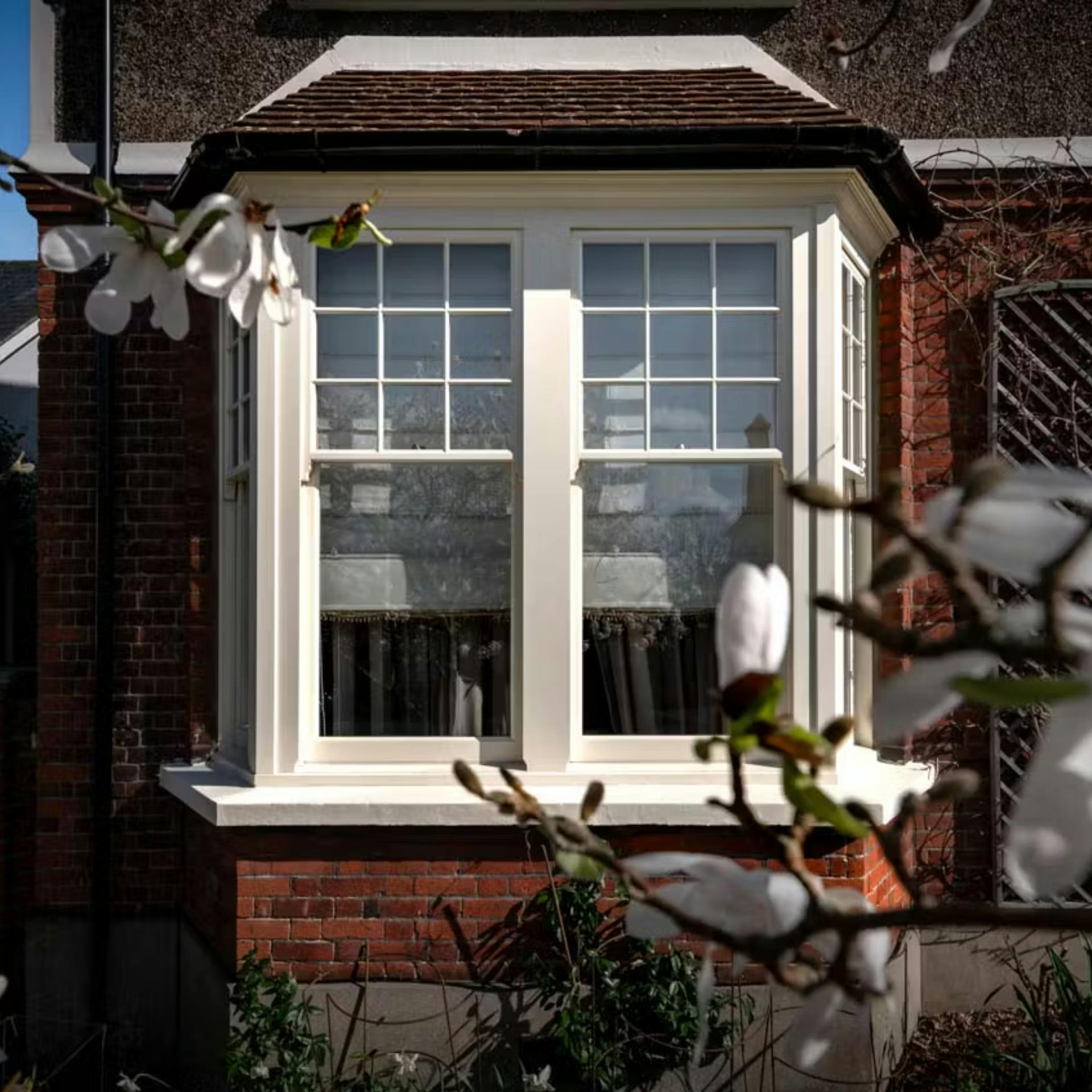Replacing Singular Glazing With Double-Glazing
17 March 2023
Replacing Single Glazed Timber Sash Windows with Double Glazed Timber Sash Windows: A Sound Insulation Perspective.
Introduction to Sound Insulation and Glazing
Basics of Sound Insulation
We’ve all experienced it — the loud sounds from outside that make it difficult to concentrate or relax inside our homes. Sound insulation is the process of reducing the amount of sound that travels through a building’s walls, floors, ceilings, and windows. Effective sound insulation can make our living spaces more comfortable and peaceful.
Understanding Single and Double Glazing
The type of glazing used in a window has a significant impact on its sound insulation properties. Single glazed windows consist of a single pane of glass, whereas double glazed windows have two panes of glass separated by a gap filled with air or gas. This seemingly simple difference has a profound effect on the window’s ability to block sound.


Sound Transmission in Single Glazed Windows
How Single Glazing Allows Noise to Enter
Single glazed windows are notorious for their poor sound insulation. The single pane of glass provides little resistance to sound waves, allowing them to easily pass through the window and into your home. The thin glass and lack of a gap between panes also means that sound can reverberate and amplify, further increasing the noise levels indoors. This is particularly a problem on busy roads or houses underneath a flightpath.
Enhanced Sound Insulation Performance
The Science Behind Double Glazing
Double glazed windows dramatically improve sound insulation by utilising two panes of glass separated by a gap filled with air or gas. The gap acts as a barrier, preventing sound waves from easily passing through the window. Additionally, the two panes of glass can be different thicknesses, further reducing sound transmission by making it harder for sound waves to resonate between the panes.
Numerical Differences in Sound Insulation
According to studies, double glazed windows can reduce sound transmission by up to 35 decibels (dB), compared to just 20-25 dB reduction offered by single glazed windows. This means that double glazed windows can effectively halve the amount of noise that enters your home, providing a much quieter and more comfortable living environment.
Additional Advantages of Double Glazing
Energy Efficiency
Double glazed windows don’t just provide better sound insulation; they also improve energy efficiency. The air or gas-filled gap between the panes acts as an insulating barrier, reducing heat transfer between the inside and outside of your home. This means that your home will stay warmer in the winter and cooler in the summer, leading to reduced energy bills and a more comfortable living environment.

Double glazed windows offer increased security compared to single glazed windows. The two panes of glass make it more difficult for potential intruders to break through the window, providing an extra layer of protection for your home.

Aesthetics and Longevity
Double glazed timber sash windows maintain the classic look of traditional timber sash windows while offering modern performance benefits. They are also more durable and longer-lasting than single glazed windows, meaning you won’t have to replace them as often.

Conclusion
Replacing single glazed timber sash windows with double glazed timber sash windows offers a range of sound insulation benefits, making your home quieter and more comfortable. With the ability to reduce sound transmission by up to 35 dB and provide a host of additional advantages such as increased energy efficiency, security, and aesthetics, it’s no wonder that more and more homeowners are making the switch to double glazing. Experience the difference for yourself and enjoy a more peaceful living environment with double glazed timber sash windows.
FAQs
1. How much does it cost to replace single glazed timber sash windows with double glazed versions?
The cost of replacing single glazed timber sash windows with double glazed versions varies depending on factors such as window size, materials, and labor rates.
2. Can I replace the glass in my single glazed timber sash windows with double glazed glass, or do I need to replace the entire window?
We can only replace the entire window. Although repairs might be cheaper at first, in the long run you will end up paying more for maintenance.
3. How long does it take to replace single glazed timber sash windows with double glazed versions?
Our current lead time is around 10 weeks. A team can fit between 2 – 3 sash windows in a day. Any window that is removed will be installed and the house made secure in the same day.
4. Are there any drawbacks to double glazed timber sash windows?
While double glazed timber sash windows offer many benefits, they can be more expensive upfront than single glazed windows. Additionally, they may require slightly more maintenance than other types of windows, such as uPVC windows. However, the long-term benefits of improved sound insulation, energy efficiency, and security often outweigh these drawbacks.
5. How do I maintain my double glazed timber sash windows?
To keep your double glazed timber sash windows in good condition, clean the glass regularly with a glass cleaner and soft cloth. Inspect the window frames and sashes for signs of wear or damage, and promptly address any issues. Regularly lubricate the moving parts of the window, and check the seals around the glass panes to ensure they remain airtight. For more information, read our blog How To Properly Clean & Maintain Timber Sash Windows.











